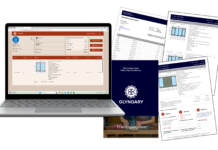
 UK construction companies recorded a sustained expansion of overall business activity in October, according to the latest data from Markit/CIPS UK.
UK construction companies recorded a sustained expansion of overall business activity in October, according to the latest data from Markit/CIPS UK.
Following a ‘solid increase’ in residential work, new order volumes also picked up across the construction sector. However, the rate of growth eased since September and remained weaker than seen prior to this summer. This contributed to a drop in business confidence regarding the year-ahead growth outlook, with the latest reading the second lowest since May 2013.
At the same time, input costs rose at one of the fastest rates seen over the past five years, which survey respondents widely linked to the weaker pound.
At 52.6 in October, the seasonally adjusted Markit/CIPS UK Construction Purchasing Managers’ Index (PMI) edged up from 52.3 in September and remained above the 50.0 no change threshold for the second month running.
The latest reading pointed to the fastest upturn in activity since March, although the rate of growth was only modest and still much softer than the average since the recovery began three-and-a-half years ago (57.3). Housing activity remained the key growth driver across the construction sector in October.
Tim Moore, senior economist at IHS Markit and author of the Markit/CIPS Construction PMI, said: “The UK construction sector has started the fourth quarter in a positive fashion, with the latest survey data revealing a moderate rebound from the downturn seen during the summer.
“Construction growth was dependent on a solid recovery in residential work, as civil engineering and commercial building struggled for momentum in October.
“While business activity has picked up since the third quarter, the recent phase of new order growth has been the weakest for three-and-a-half years. Survey respondents noted that Brexit-related uncertainty and concerns about the UK economic outlook had held back investment spending.
“Subdued new order intakes contributed to a fall in construction sector business confidence for the first time since July. At the same time, a sharp pace of input price inflation added to construction firms’ anxieties about the year-ahead business outlook, with higher costs overwhelmingly linked to supplier price hikes in response to the weak pound.”



